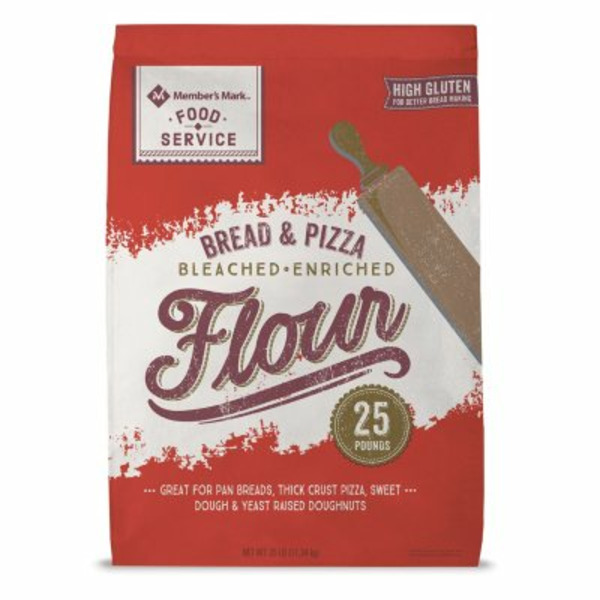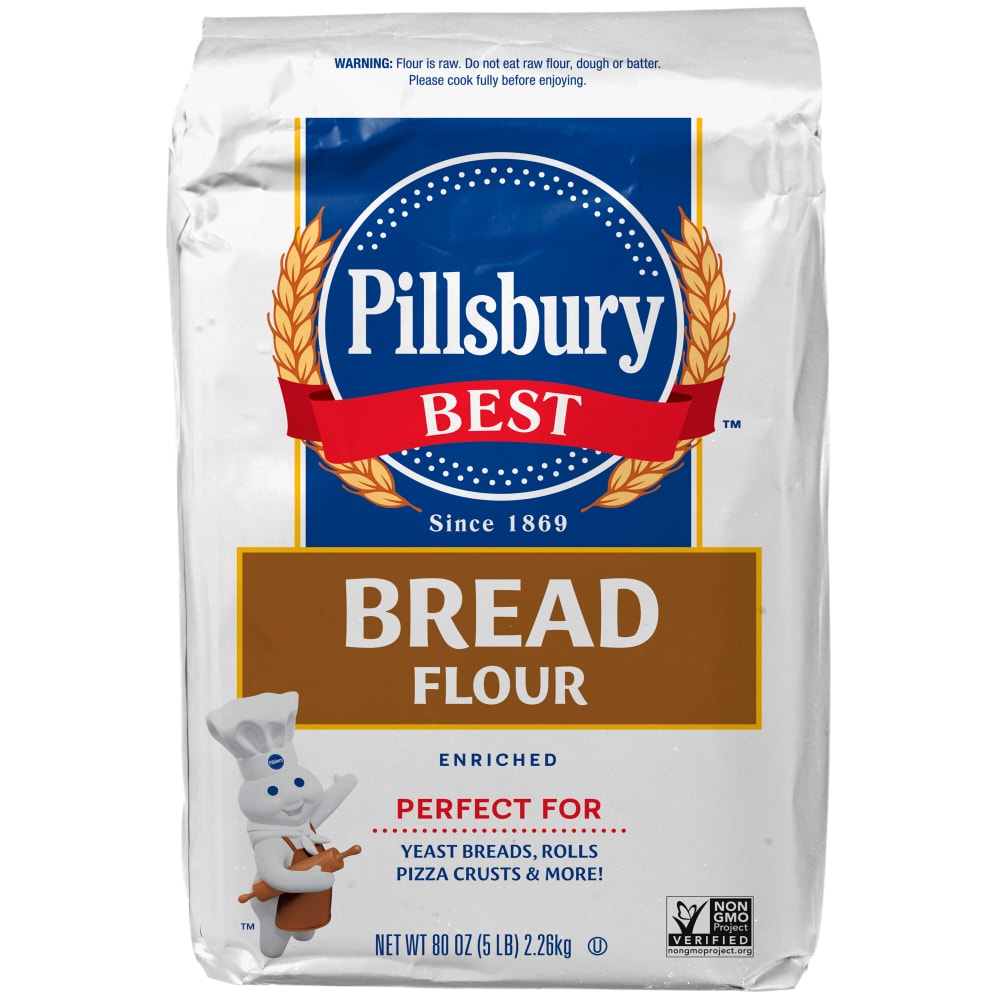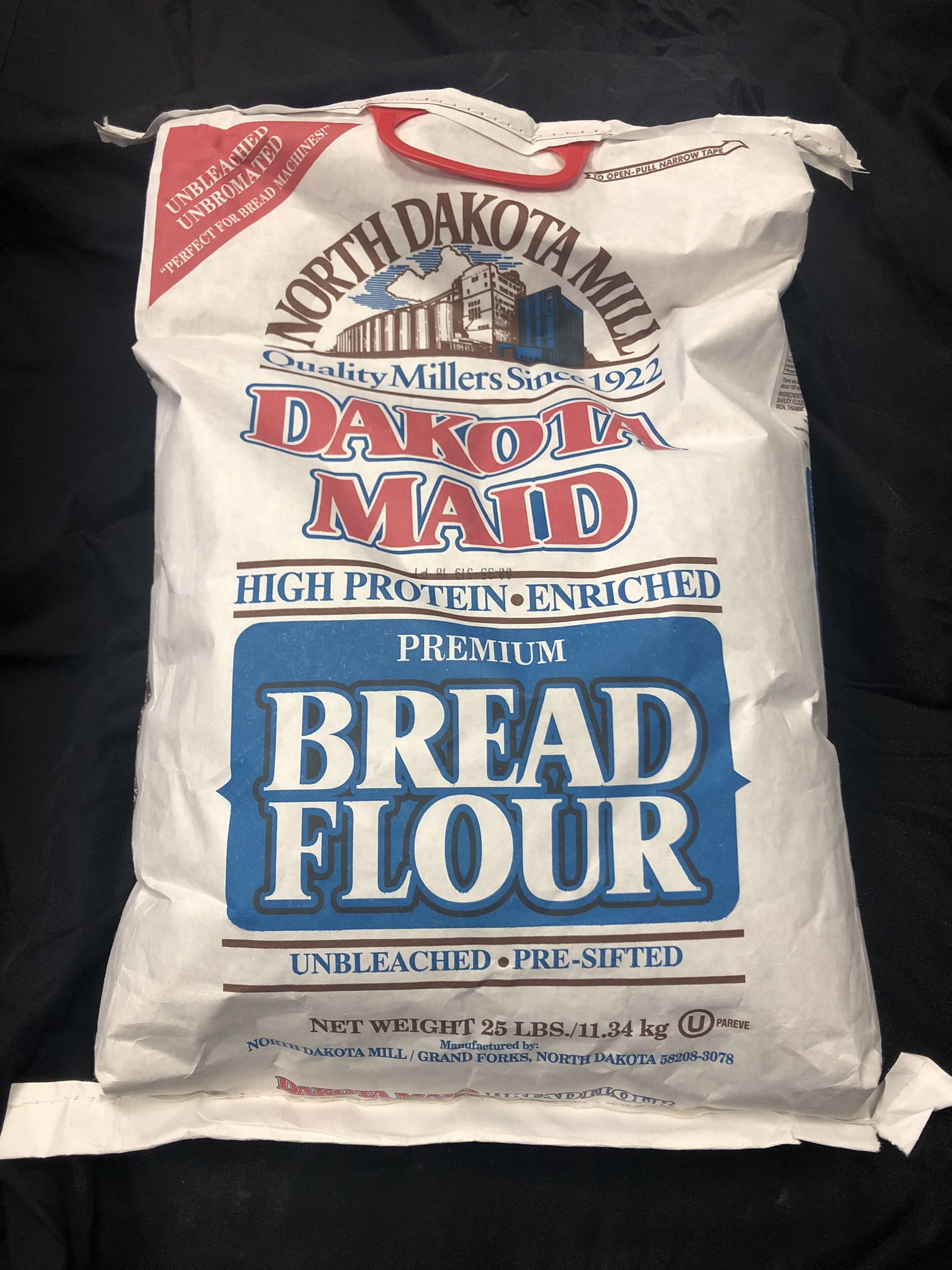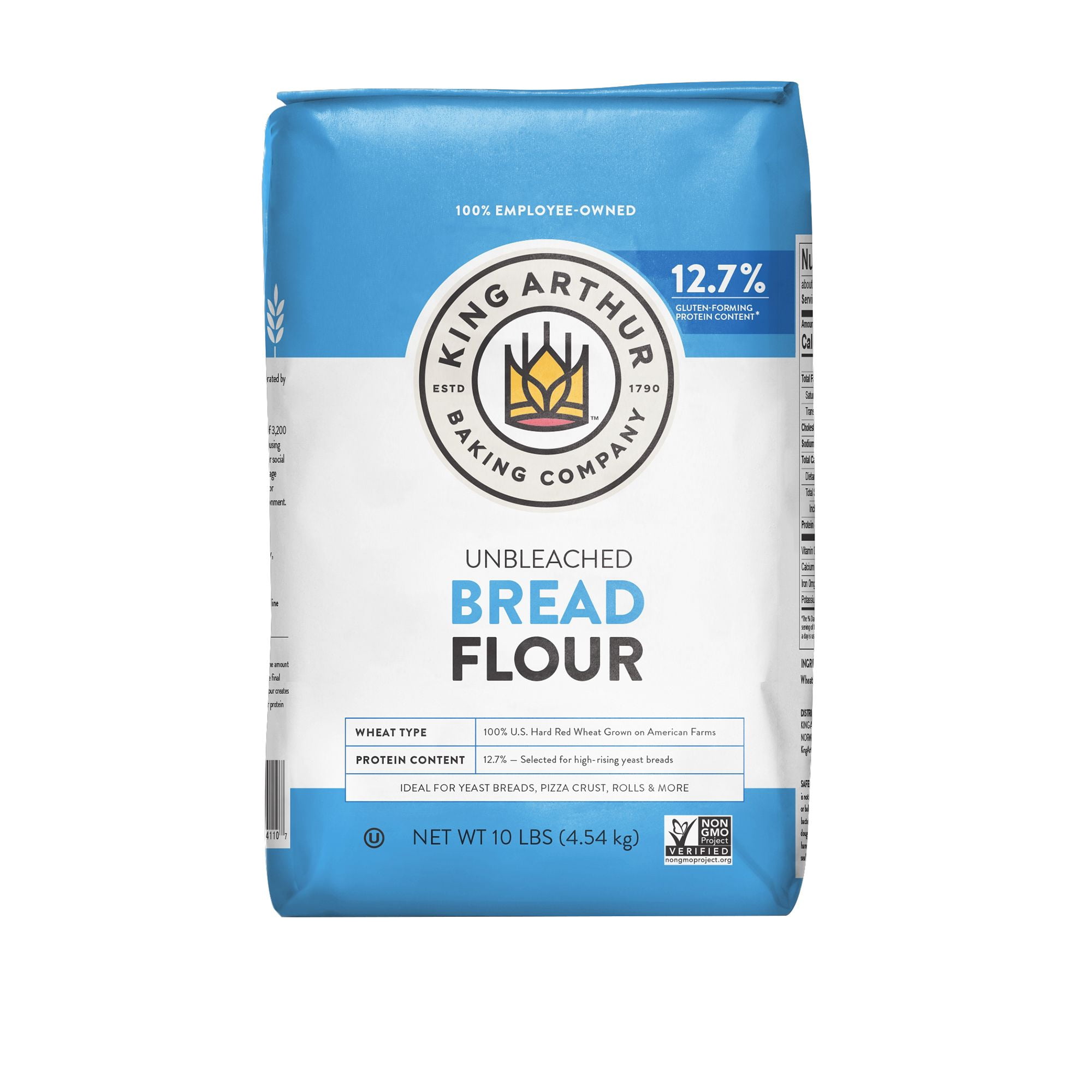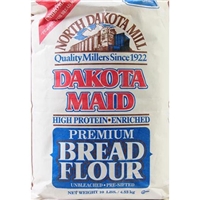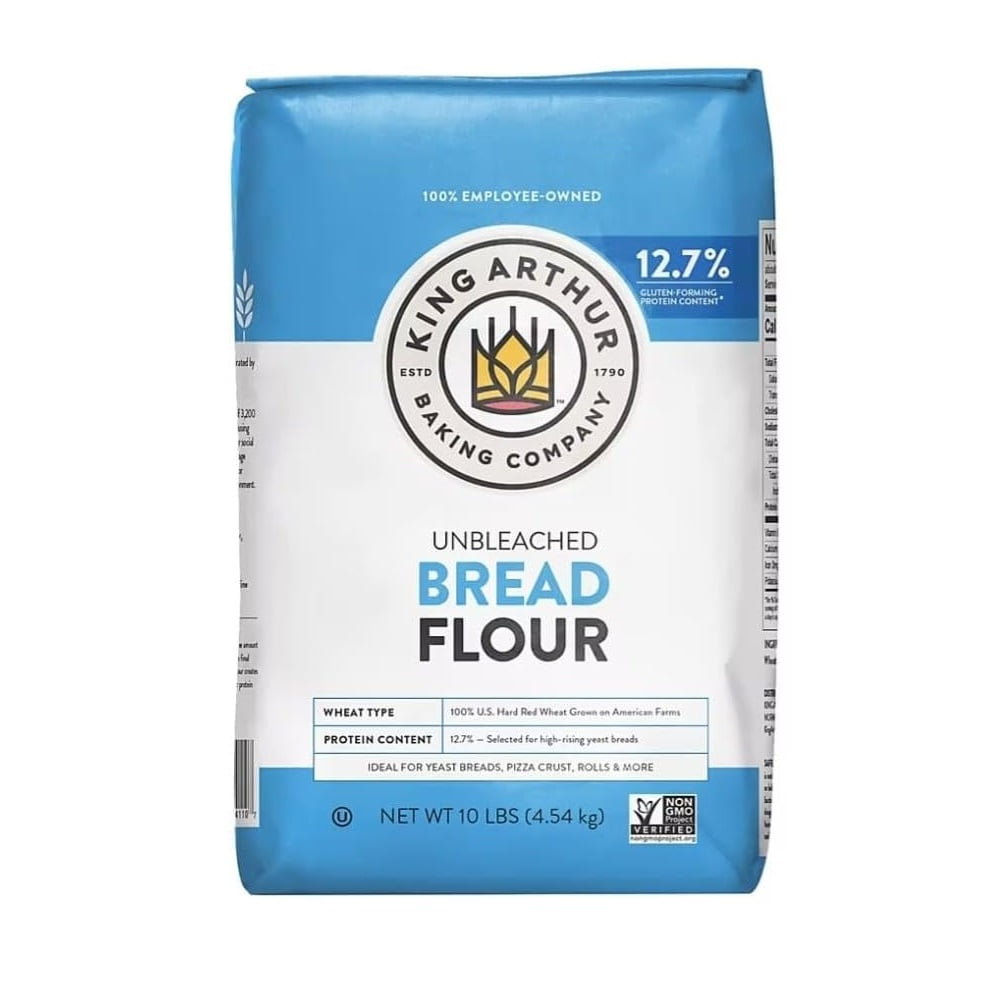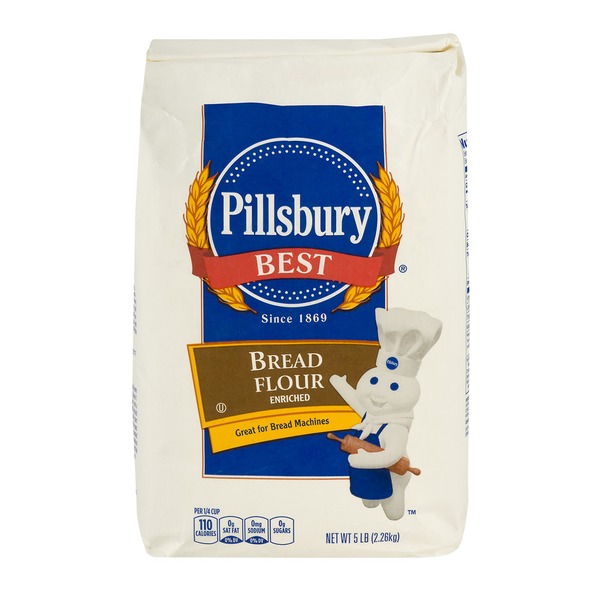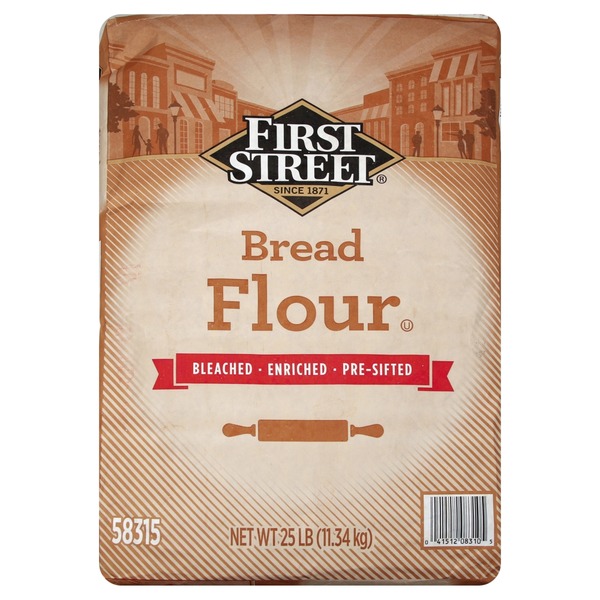BREADS
Bread Flour
Bread flour is a type of high-protein flour specifically designed for baking yeast-leavened bread and other similar baked goods. It has a protein content of around 12-14%, which is higher than that of all-purpose flour. This high protein content contributes to the development of a strong gluten network, providing the dough with increased elasticity and better ability to hold gas, resulting in higher rising and chewier texture in the final product.
Home cooks and consumers can use bread flour for various types of bread, including artisanal loaves, baguettes, and pizza dough. In addition to yeast-leavened bread, bread flour can also be used for other applications where a strong dough structure is desired, such as some types of cookies and pastries. Though it's not a one-to-one replacement for all-purpose flour in recipes, its unique properties ensure a superior texture and crumb structure in bread baking.
84%
CARBS
2%
FAT
14%
PROTEIN
194 Bread Flour Products
H-E-B The Baker's Scoop Bread Flour
Member's Mark Bread & Pizza Enriched Bleached Wheat Flour
Pillsbury Bread Flour, Enriched
Dakota Maid Bread Flour
H-E-B Organics Bread Flour
King Arthur Bread Flour
North Dakota Mill Dakota Maid Premium Bread Flour
King Arthur Baking Company Bread Flour, 10 Pounds
Pillsbury Best Bread Flour Enriched
Bleached, Enriched, Pre-Sifted Bread Flour
Used In 66 Recipes
Bread Flour Is Frequently Used With
Bread Flour FAQ
Bread flour, while a staple in baking, can seem puzzling to many home cooks. The high protein content in this flour type makes it ideal for yeast-leavened bread and baked goods. It forms a sturdy gluten network that traps the gas produced by yeast during the fermentation process, resulting in bread with a light, airy structure, and a chewy texture. However, while the results can be excellent, it can be challenging to handle because of the dough's elasticity and requirement for kneading that is much more than usual.
People often confuse bread flour with all-purpose flour and don't use it to its full potential. They replace it with all-purpose flour or vice versa in recipes without considering the difference in protein content and resulting texture. One thing to remember is, in most recipes, especially those that call for yeast, bread flour would always give a superior texture and crust. However, in cakes or muffins, where a tender crumb is desired, replacing regular flour with bread flour won't work well.
A little-known bread-making tip is the use of autolysis, a process where water and flour are mixed together and left to rest for a period. This method can help bread made with bread flour to hydrate properly and enhance gluten formation. Moreover, bread flour can also be used to mimic the texture of high-gluten flours, like durum wheat, in certain recipes, by combining it with all-purpose flour.
Can I use bread flour instead of all-purpose flour in a recipe?
Why is the bread made with bread flour more chewy?
How can you tell the difference between bread flour and all-purpose flour?
Why does my bread dough made with bread flour seem tougher?
Can I use bread flour to make cakes?
Can I mix bread flour and all-purpose flour?
What is autolysis in relation to bread making?
Why does bread flour make better pizza dough?
Do I need to adjust the amount of yeast when using bread flour?
Can I use bread flour in gluten-free recipes?
Expiration & Storage Tips
When does bread flour expire?
Bread flour typically has a shelf life of about one year when unopened and stored in a cool, dark place. Once opened, it's best used within six months, although it can last up to a year if stored properly. If stored in the refrigerator or freezer, bread flour can last even longer, up to two years.
How do you tell if bread flour is bad?
The main sign bread flour has gone bad is a change in color or an off smell. Another sign is if it becomes infested with flour beetles or other pantry pests. To confirm if your flour is still good, try rubbing some between your fingers - good flour should have a fresh, slightly nutty smell, and should feel powdery and smooth; not coarse, wet or lumpy.
Tips for storing bread flour to extend shelf life
• Keep the flour in an airtight container.
• Store bread flour in a cool, dry place. The pantry is an ideal location - avoid damp areas like under the sink.
• If you're not going to use it within a few months, you can store the flour in the freezer. It won't freeze solid, so you can measure out the amount you need directly from the freezer.
• Try to use the 'first in, first out' rule, meaning you should use the oldest flour first.
EXPIRES WITHIN
10 - 14
MONTHS
Equivalents
Substitutes

All Purpose Flour

Maida Flour

Unbleached All Purpose Flour

Whole Wheat Flour

Buckwheat Flour

Gluten Free Flour

Gluten Free Self Raising Flour

White Whole Wheat Flour

Unbleached Self Rising Flour

Cake Flour
See All
Health Info
Macros
92g
CARBS
2g
FAT
15g
PROTEIN
Allowed on these diets
LOW FAT
HIGH CALCIUM
VEGETARIAN
VEGAN
LACTOSE FREE
Contains these allergens
WHEAT


